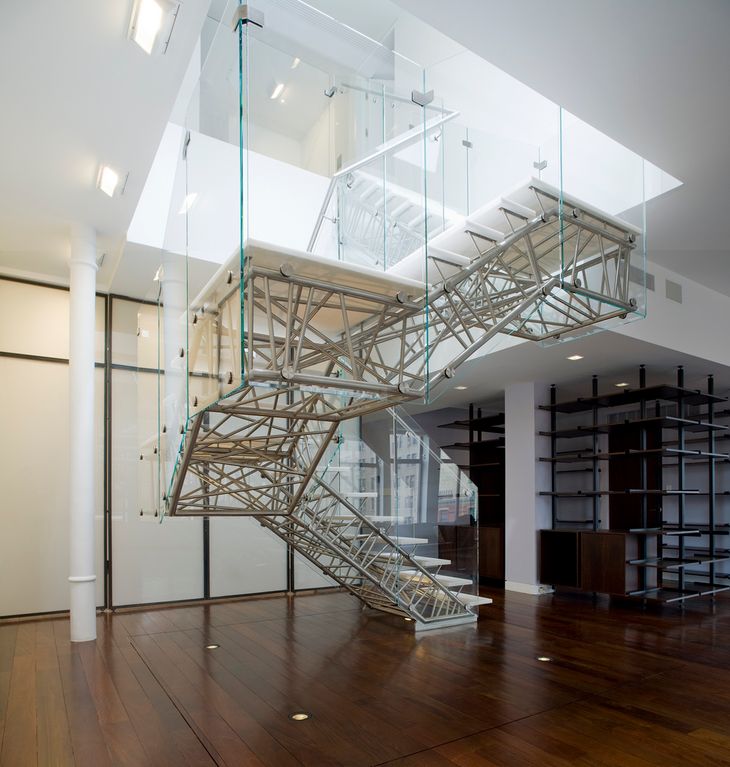Caliper Studio's Genetic Staircase translates obscure computer code into an accessible metaphor. The literal correlation between a genome and the metal woven between the coiled stairs, produces an easy to understand diagram of a genetic algorithm. It is not the first time a genetic algorithm has been used to design (see my past post on Archikludge) but for many people this will be the first time they understand what a genetic algorithm does. As a communication device the Genetic Staircase is exceptional but as a staircase I still wonder if the genetic algorithm has been successful.
The program for the Genetic Staircase was a Rhino script. The script generates a population of individual staircases, each one with the diagonal members in different places. These individuals are then evaluated in an external structural analysis program (CADRE lite). The most successful designs produce offspring by splicing their diagonal members together using a single crossover point (Video of the crossover process). As an aside I think this is a technically limited method since Rhino script is slow and the structural analysis program had no scripting interface - both of these factors greatly limit the potential of the program to rapidly iterate between options.
The actual stairs are manually defined using a parametric model, as are the main runners and the handrails. It is only the criss-cross of diagonal members under the stairs that have been created by the genetic algorithm.The problem is so well defined that the solution found by the genetic algorithm could have been anticipated beforehand; it was always going to be random diagonal members running under the stairs. The genetic algorithm therefore is not operating as a discovery tool but more as an optimisation tool. But what is it optimising? The staircase is not cheap, lightweight or easy to construct. Presumably the algorithm has some variables that balance the cost of the staircase with the visual weight and structural stability. Correlating such variables in my experience is problematic since they are all in different units - creating a formula to balance structural stability against cost gives a false sense of authority to the process.
It is here that the Genetic Staircase is unsuccessful: it is great at explaining how a genetic algorithm works, but it does not demonstrate why the genetic algorithm could be better than the normative design methods. Then again I could have this all wrong and the genetic algorithm may just be there as an advertising device. If it is, Caliper Studio have done a wonderful job capturing the attention of non-geeks. A bold and exciting first step by Caliper Studio.
See also: Caliper Studio's website; Pictures of the genetic staircase on flickr. Cover photo via flickr, taken by Ty Cole.

Jon Mirtschin
Interesting commentry. I'm interested in further discussion/debate on strategies such as Genetic Algorithms used in design, as are a few other colleagues at Expedition. If you're after another application of this, you might be interested in this project we worked on, the Santa Maria Del Pianto Station. http://www.expedition.uk.com/index.php?pid=141
This project usually evokes opinions and discussions when raised.
Cheers,
Jon
Daniel
Thanks for the link Jon, I have not come across that project before. It is interesting to see the Expedition project explicitly state the objectives of the Genetic Algorithm (especially compared to Caliper Studio's staircase). I find that a much more successful approach, even though it is perhaps not as intuitive as the staircase.
Also your blog http://geometrygym.blogspot.com/ has some really useful stuff on it.
Daniel